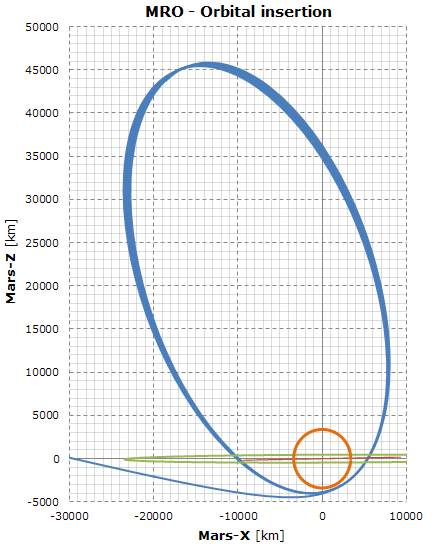
This graph shows the arrival hyperbolic orbit and some aerobraking preparation orbits in the first 21 days.
Since the MRO orbit doesn't lie exactly on the XZ plane, the maximum distance shown in this graph doesn't correspond to the apoapsis, which instead reaches about 48350 km.
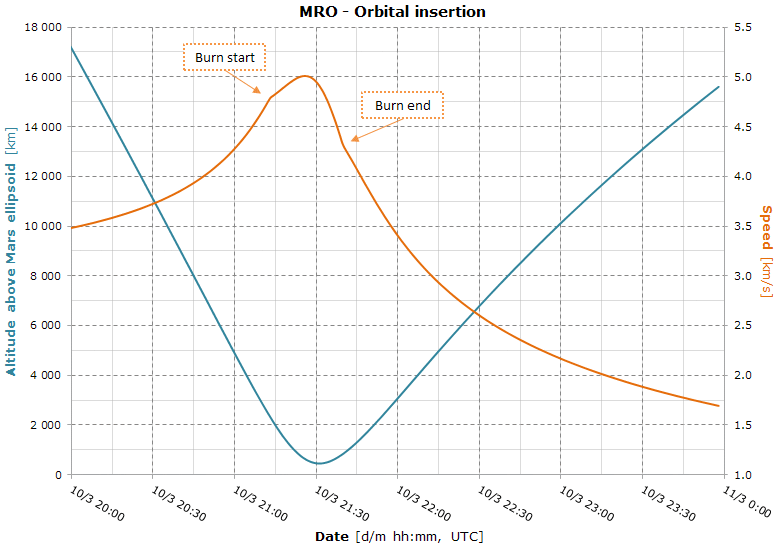
During the approach, the orbiter started the insertion burn at an altitude of 2340 km, when the speed was 4.8 km/s.
The acceleration decreased from 0.82 m/s
2 (before the engines firing) to 0.32 m/s
2. Hence the speed further increased to 5 km/s down to an altitude of 638 km.
The insertion burn lasted about 26 minutes.
The first periapsis altitude was 458.5 km and the first apoapsis altitude was 44968 km.
During the next 10 days, there were no significant variations in the orbits.
Then began the burns to lower the periapsis to the aerobraking altitude.
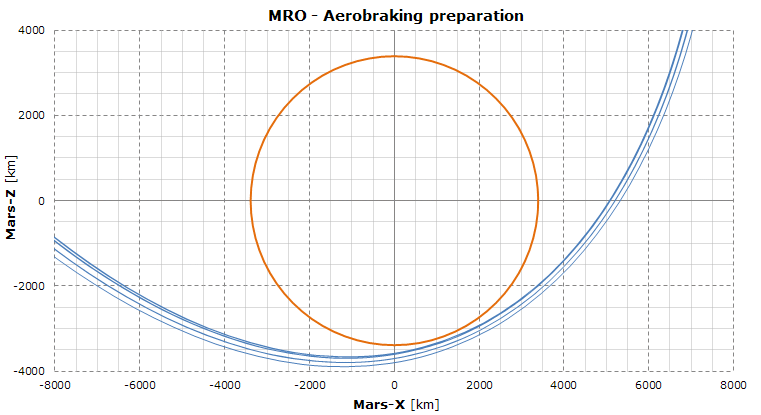
Braking with the engines near the apoapsis, MRO began to lower the periapsis to an altitude of about 100 km, as shown in this detailed view.
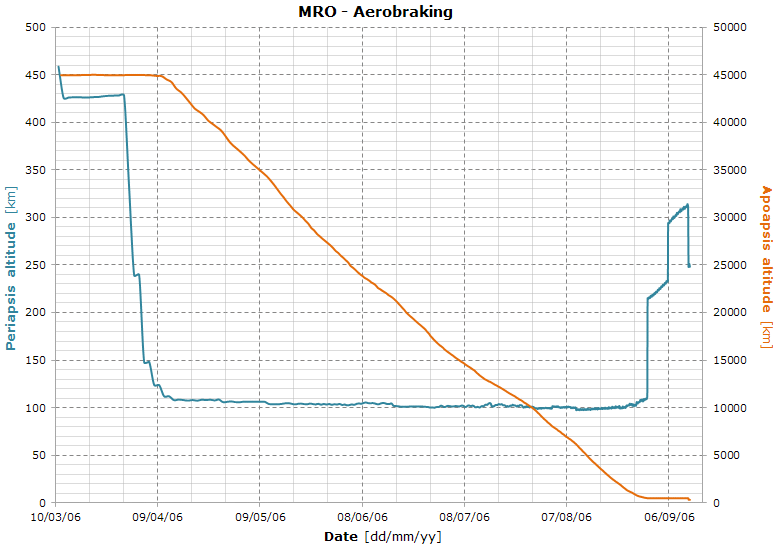
Here's the periapsis and the apoapsis altitude above the Mars ellipsoid as a function of the time.
The final orbit was about 112 x 486 km.
Then the periapsis was raised again to the science orbit altitude.
NASA's Fact Sheet (pdf, 253 KiB) states that the aerobraking reduced the amount of onboard fuel of about 450 kg.
 This graph shows the arrival hyperbolic orbit and some aerobraking preparation orbits in the first 21 days.
This graph shows the arrival hyperbolic orbit and some aerobraking preparation orbits in the first 21 days. During the approach, the orbiter started the insertion burn at an altitude of 2340 km, when the speed was 4.8 km/s.
During the approach, the orbiter started the insertion burn at an altitude of 2340 km, when the speed was 4.8 km/s. Braking with the engines near the apoapsis, MRO began to lower the periapsis to an altitude of about 100 km, as shown in this detailed view.
Braking with the engines near the apoapsis, MRO began to lower the periapsis to an altitude of about 100 km, as shown in this detailed view.
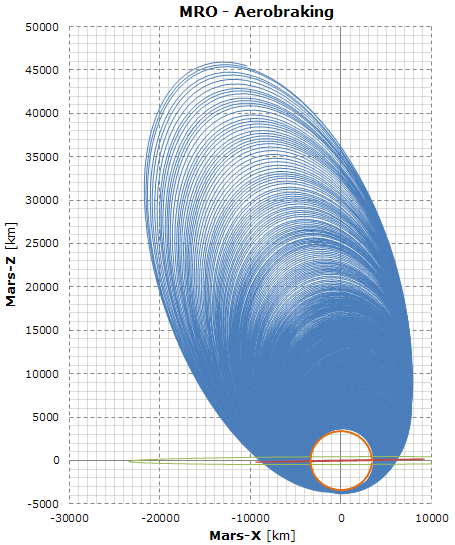 Then, the interminable aerobraking phase began, lasting about 140 days.
Then, the interminable aerobraking phase began, lasting about 140 days. Here's the periapsis and the apoapsis altitude above the Mars ellipsoid as a function of the time.
Here's the periapsis and the apoapsis altitude above the Mars ellipsoid as a function of the time.